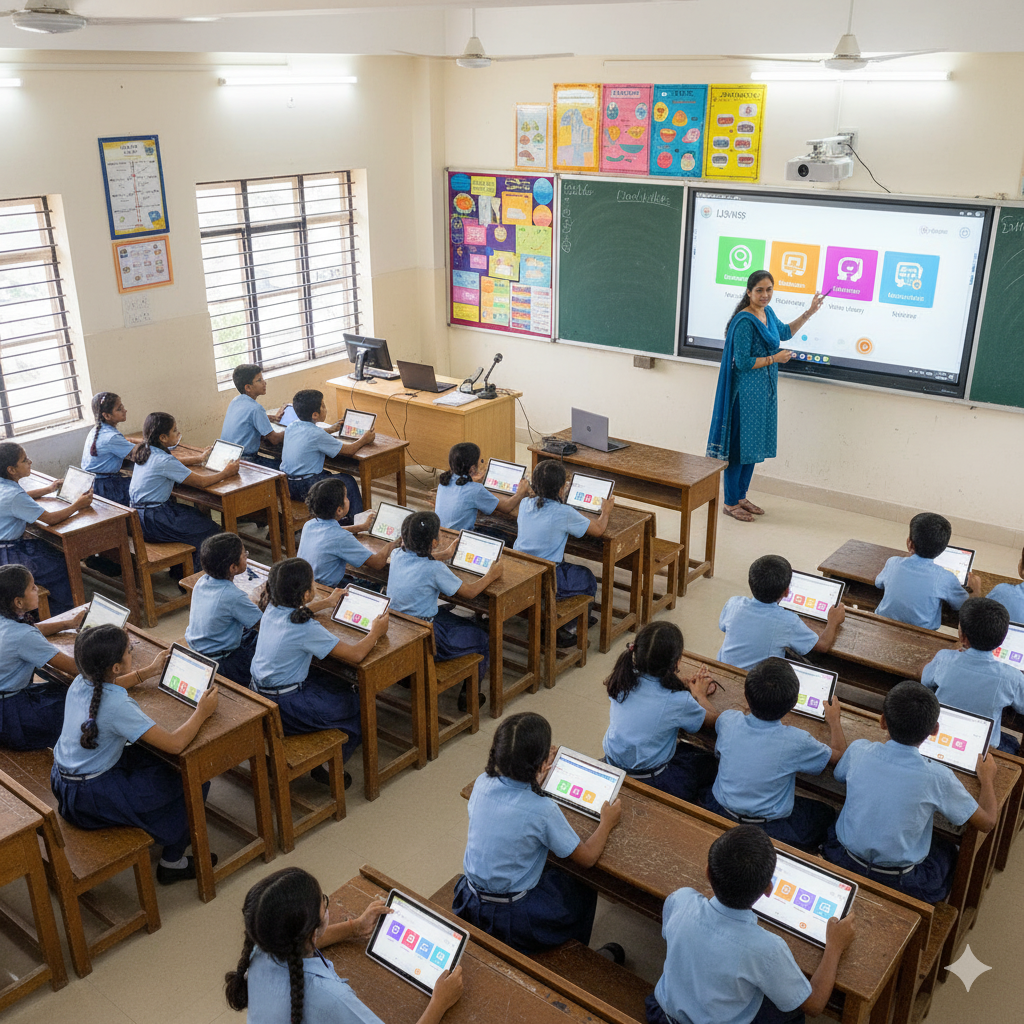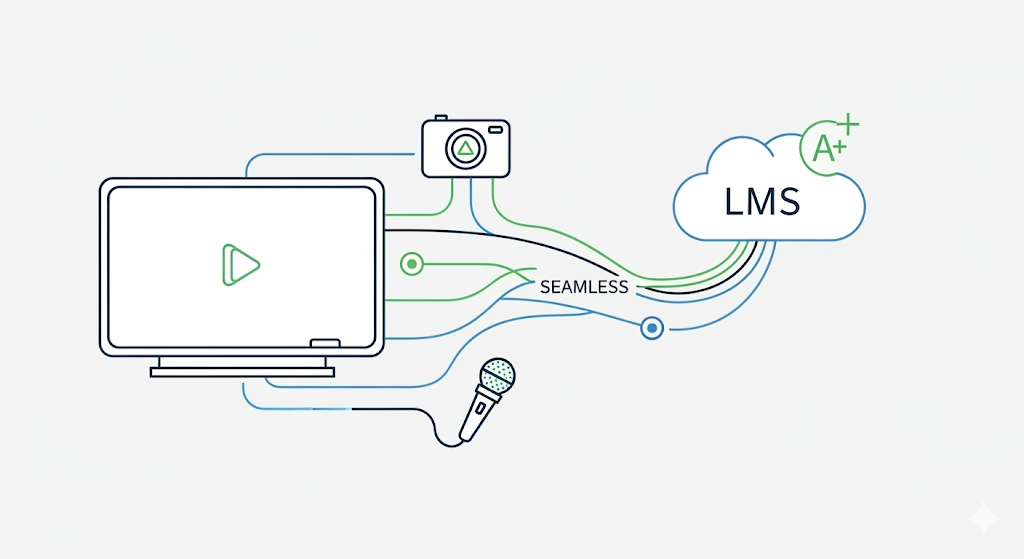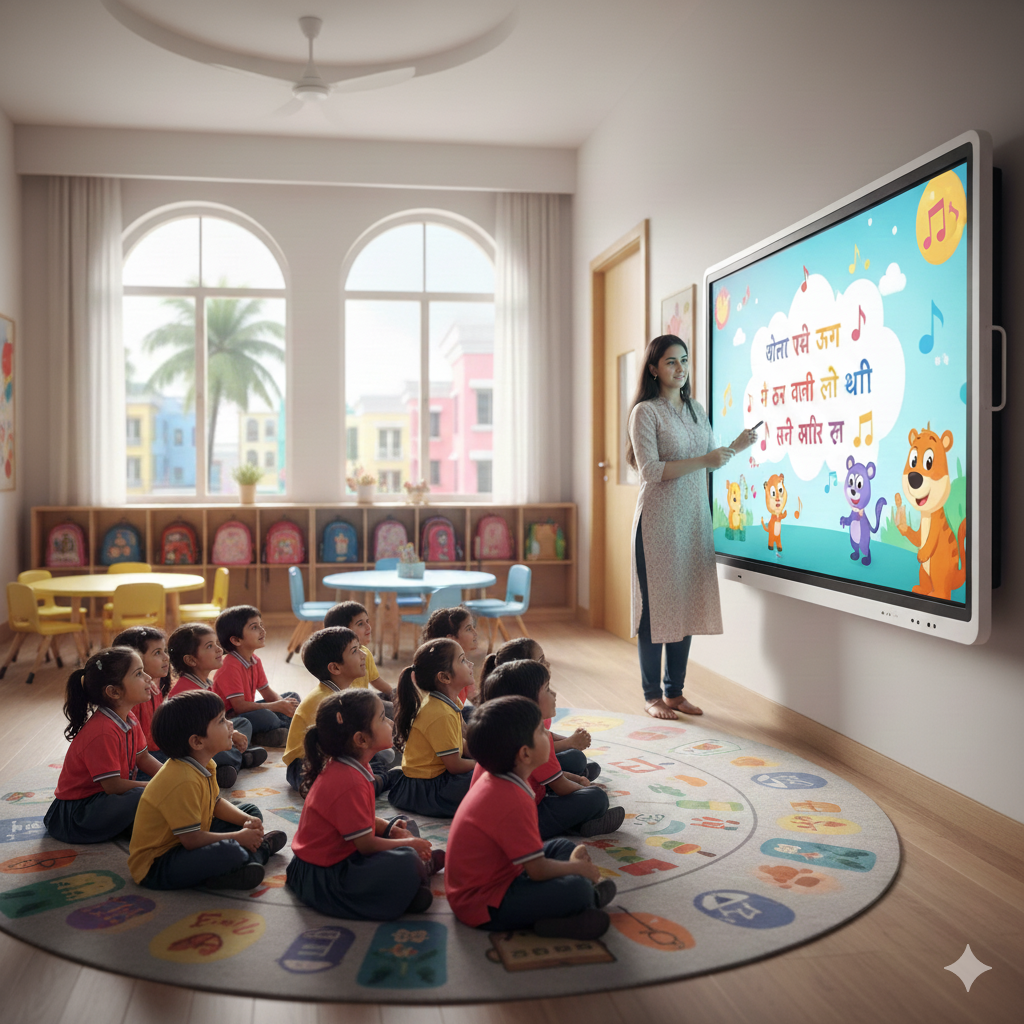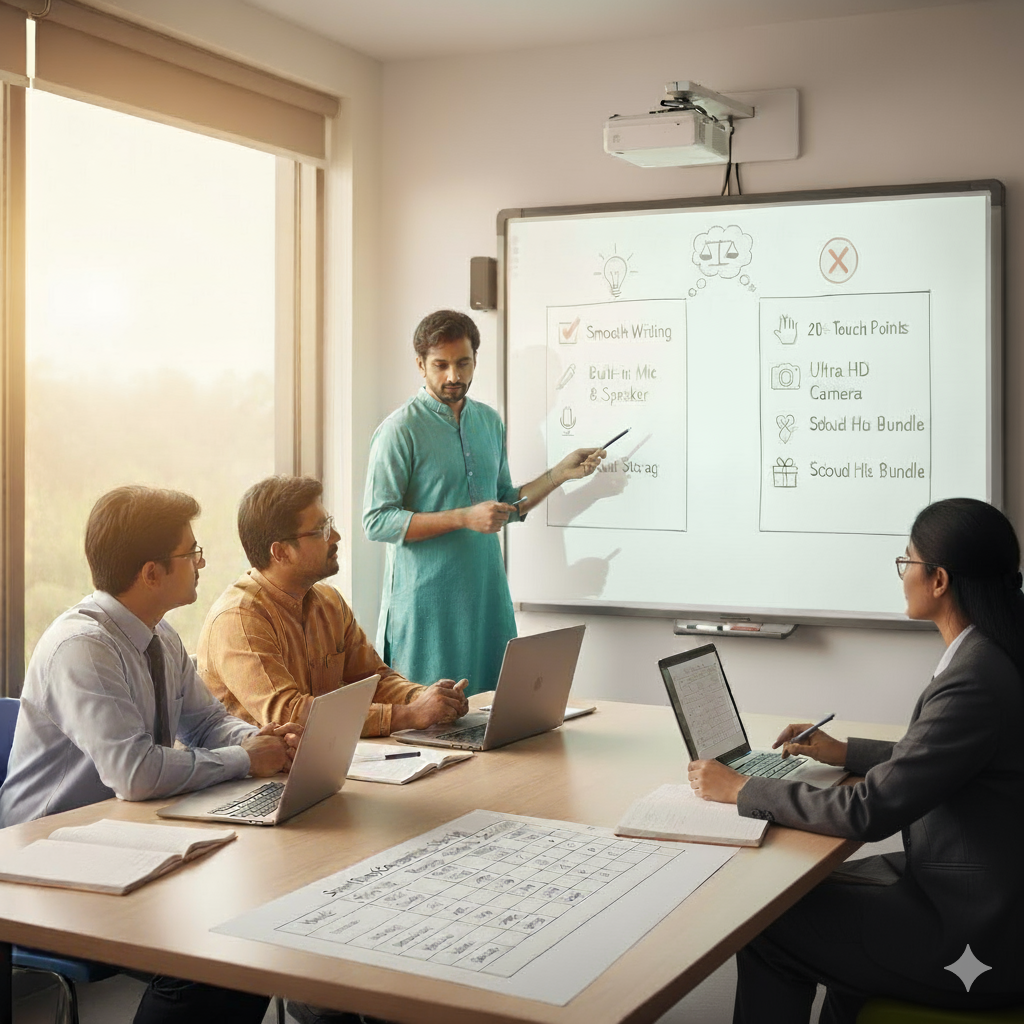Choosing the Best LMS in India? Don’t Overlook Your Classroom Hardware

Schools across India are increasingly adopting new learning management systems. It makes sense because an LMS can centralise content, assessments, and student progress in one place. Yet, many educators miss a key point. They compare features, pricing, dashboards, and integrations but overlook the bigger picture. Even the best LMS in India won’t succeed if the classroom hardware isn’t ready to support it. Thus, this article discusses how important is choosing the right digital classroom hardware along with the best performing LMS.
Why Picking the Best LMS Alone Isn’t Enough
Educational leaders often assume a great LMS will transform teaching on its own. It rarely works that way. Even the most powerful platforms underperform if the classroom environment isn’t prepared to deliver what the software promises.
This gap is visible in many schools that buy licenses but see low teacher adoption. It’s not because teachers resist change by nature. It’s often because their classrooms lack the tools to run the LMS smoothly.
For instance, a teacher trying to deliver interactive quizzes may struggle if the display isn’t touch-enabled or if the internet keeps dropping. Video modules fail when the room lacks cameras and microphones. Over time, teachers abandon the system, and the investment goes unused.
A holistic digital classroom setup that supports the software experience is not a luxury anymore. It is a necessity.
The Critical Role of Hardware in LMS Success

Hardware shapes how an LMS feels to both teachers and students. Even a simple feature like screen sharing depends on reliable classroom technology.
Here are key components that influence the success of any LMS platform:
- Interactive Displays: Touch-enabled displays make it easier for teachers to annotate content, explain diagrams, and keep students engaged during lessons. Without them, lessons stay static.
- Cameras and Microphones: These are essential for hybrid learning or remote participation. If video quality is poor or audio drops often, students lose focus, and participation drops.
- Reliable Connectivity and Networking: A strong network backbone ensures real-time syncing of assignments, assessments, and live classes. Slow or patchy internet breaks continuity and frustrates teachers.
When these elements are missing, LMS tools get underused. The software is blamed, but the real bottleneck is the classroom’s infrastructure. This is why hardware can decide how well the best LMS in India will actually perform.
Common Integration Challenges Indian Schools Face
In practice, many Indian schools face integration challenges because their systems are fragmented.
- One vendor supplies the LMS.
- Another installs the interactive displays.
- A third handles networking and connectivity.
This creates a chain of dependencies. When something breaks, each vendor blames the other. The school’s IT team spends days coordinating fixes while teachers wait.
Another hurdle is long setup times. Schools can take months to get classrooms ready after buying an LMS. During this gap, enthusiasm fades and teachers revert to old methods.
Compatibility issues also emerge when hardware doesn’t meet the technical requirements of the software. Add to this the lack of local technical support or hands-on training, and the result is predictable—licenses get wasted, and teacher burnout sets in.
How to Align Your Best LMS Choice With Your Classroom Infrastructure
To avoid these pitfalls, school leaders need to align LMS selection with hardware readiness. Here’s a simple framework:
- Audit Existing Classroom Hardware: Document the condition of displays, networking equipment, audio-visual tools, and internet bandwidth. This shows where upgrades are needed.
- Define Digital Teaching Goals: Decide if your teachers will run hybrid classes, record lessons, conduct assessments, or drive digital collaboration in classroom settings. Your goals will shape your requirements.
- Shortlist LMS Options for Compatibility: Only consider LMS platforms that can integrate well with your current or planned infrastructure. Check hardware requirements and supported tools.
- Choose Integration-Friendly Hardware Vendors: Look for vendors who are willing to support your LMS implementation, not just sell devices.
Roombr makes this process easier. Its digital classroom hardware is designed to work out of the box with all major LMS platforms, without complex configurations. Schools, colleges, and universities can focus on teaching effectively and efficiently without any technical hassles.
Benefits of Pairing Your Best LMS With the Right Hardware
When classroom hardware and LMS software complement each other, schools see rapid transformation.
- Higher Teacher Adoption: Teachers find the system intuitive when it works seamlessly in their classrooms.
- Stronger Student Engagement: Interactive tools and multimedia lessons capture attention better than static chalkboard teaching.
- Reduced IT Headaches: Fewer compatibility issues and less need for constant support reduce technical stress.
- Better ROI: Schools see faster returns on their LMS investment when the system is used regularly and effectively.
Ultimately, hardware turns an LMS from a concept into a daily habit. That’s what drives long-term impact.
Practical Checklist Before You Finalize the Best LMS in India
Before making a decision to buy the best LMS available in India, run through this checklist to ensure your choice is sustainable:
- Is the platform usable for both teachers and students with minimal training?
- Can it integrate smoothly with your classroom displays, cameras, and networking setup?
- Will local support and training be available if something goes wrong?
- Can both the LMS and your classroom tech scale as your school grows?
If the answer to any of these is uncertain, pause. It’s better to solve hardware gaps first than to rush into software adoption.
The Bottom Line
Choosing the best LMS in India is only half the story. To make that investment count, decision-makers must also ensure their classrooms are ready to support it. Hardware is not an afterthought, it is the bridge that turns LMS potential into real learning outcomes.
Future-Proofing Your Digital Classroom With Roombr
This is where Roombr’s digital classroom hardware fits perfectly into the journey. It is a plug-and-play system that instantly transforms any wall into a large interactive display. It includes dual cameras, advanced microphones, and real-time content sharing and recording features.
Unlike traditional panels that require extensive wiring and setup, Roombr installs quickly and works seamlessly with any LMS platform you choose. There’s no vendor lock-in or compatibility struggle. From the first day, teachers can deliver lessons, record sessions, and engage students without waiting for IT help.
That kind of reliability is what makes an LMS strategy succeed. Book a quick demo to explore the best of Roombr Digital Classroom.
Foziya Abuwala
Share
Step Into the future of
Education with Roombr

















